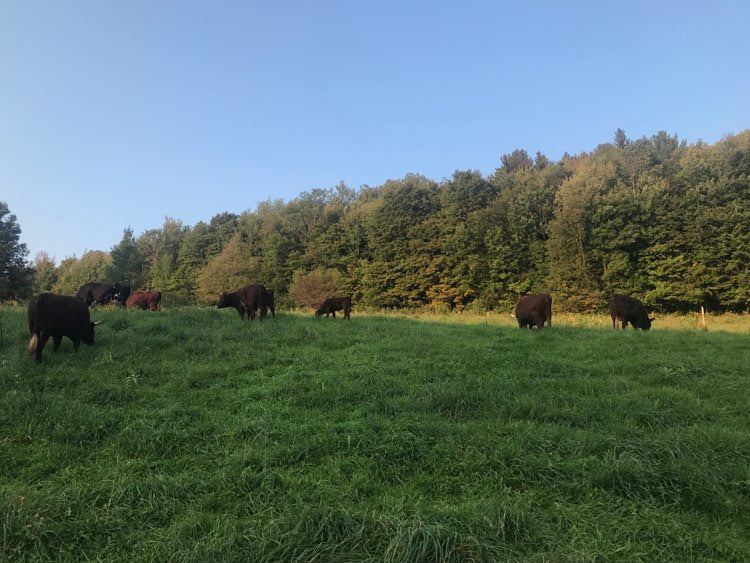
First Frost and Thoughts on Winter
Share
Autumn comes early most years in Vermont. We had our first very light frost yesterday, can you see the tiny frost crystals on the grass?

As someone who raises livestock on pasture in northern Vermont, frost heralds the coming transition from rotational grazing to stationary housing. This far north, it's an often untalked-about reality that farmers raising pastured livestock need to be just as good at keeping livestock stationary and indoors, as keeping them on grass. By the end of October, the laying hens are tucked away in their winter quarters and the cows have finished up the available grazing. Not only is the grass no longer growing but there is the constant threat of snow and frozen water troughs.
Our cows have a run in shed for their winter shelter, along with a small "sacrifice paddock" where I feed them hay. They typically stay there from mid-October to mid-December, when the grass is dormant but the ground is not yet frozen. The combination of wet ground and dormant grasses in the fall is a recipe for muddy, churned up ground, which can kill the roots of the grasses that sustain the herd in the summer.

You can find a longer article I wrote about how our cows spend their winters here: Winter Grazing in Vermont
The chickens also take a break from rotational grazing in the winter. By the end of October is becomes too hard to provide them with unfrozen water out on pasture and fresh, clean water access is very important for maintaining a laying hen's productivity. When the temperatures really plummet, I also put in heated nest mats so the eggs don't freeze before I can collect them! Closer to home I can provide electricity for water heaters, heated nest mats and coop lights. We also usually reach a point where there is too much snow for our electric fencing to be effective, so having a solid semi-permanent fence is important.
For a chicken, winter can be pretty boring, which can lead to aggression and feather picking (read more about aggression in laying hens here). To keep our hens entertained, I make sure they always have a big bale of hay to pick through. This also gives them some of the great nutrition that summer pasture provides. The geese enjoy hay as well and aren't very good at sharing. Here you can see the hens "politely" waiting for the geese to be done before checking out the hay bale.

You can also see that a large snowfall took me by surprise here and I was a little late in taking down the electric fence. Hay is also a nice way to get your chickens outside after it snows. Chickens tend to not like getting their feet snowy (and really can you blame them?) so I typically shake some hay out over the snow to encourage them to get out of the coop and walk around.
